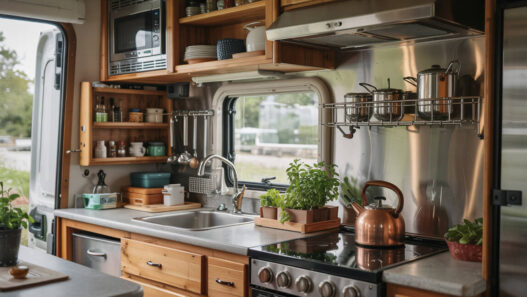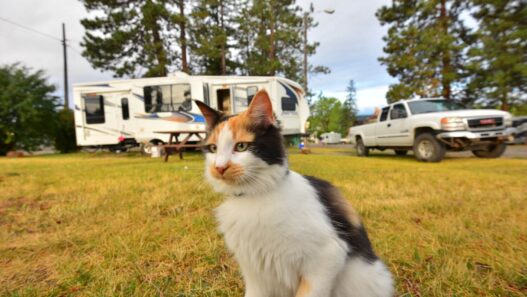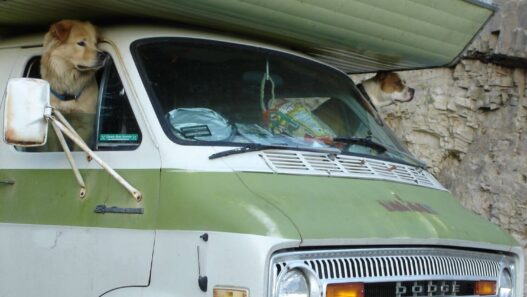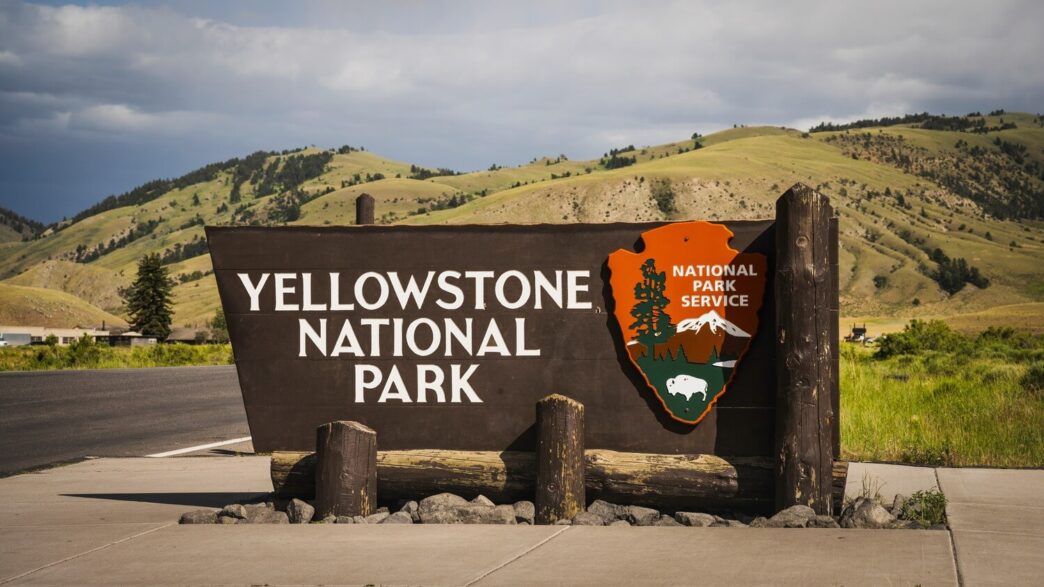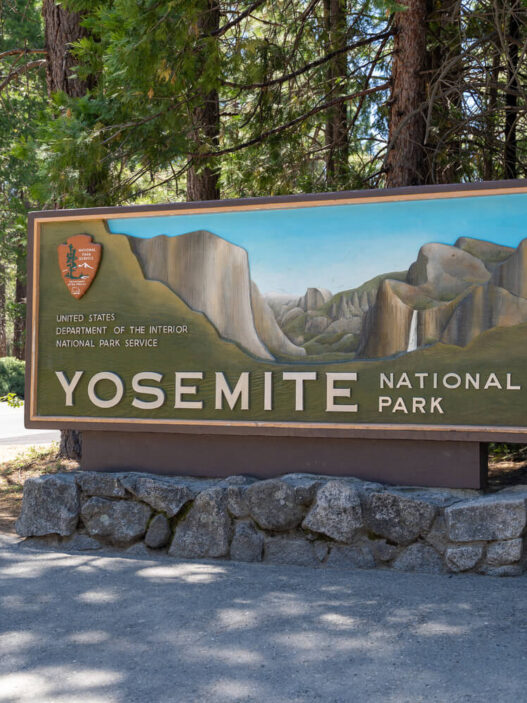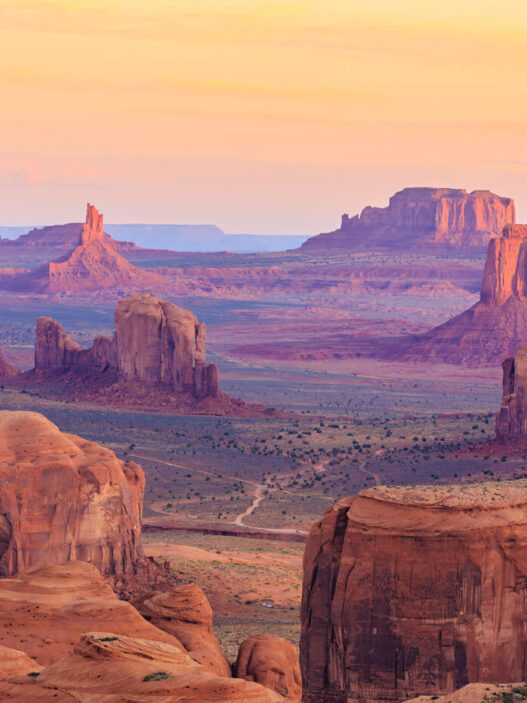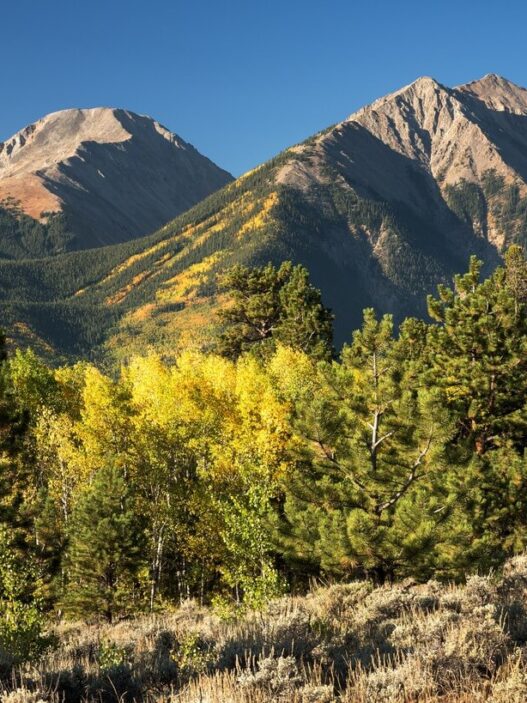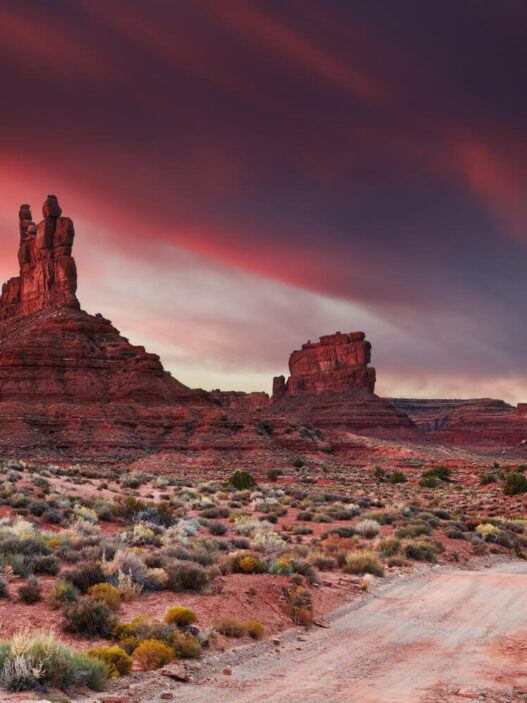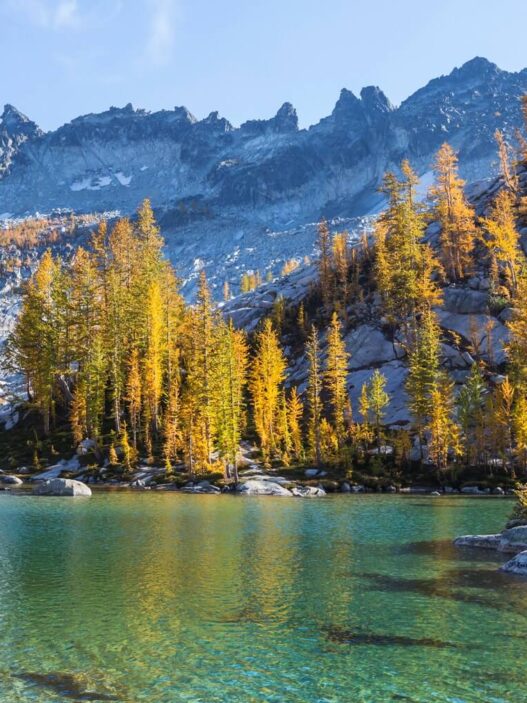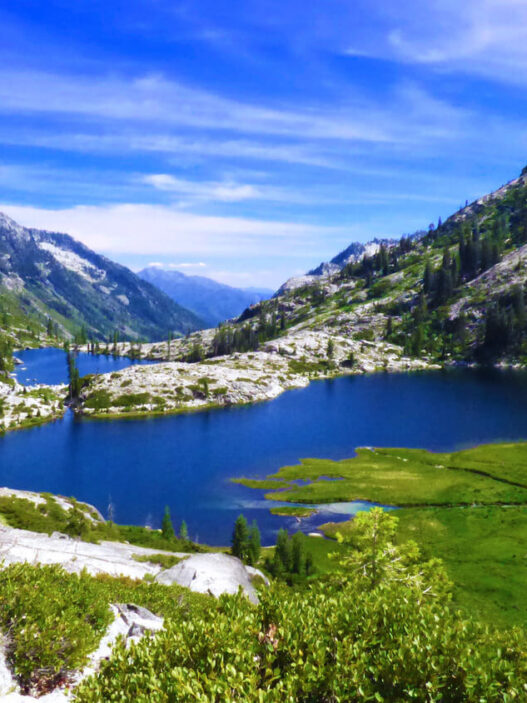Few experiences can match camping in Yellowstone National Park. As America’s first national park, established in 1872, Yellowstone offers visitors an unforgettable opportunity to immerse themselves in a landscape of hydrothermal wonders, pristine wilderness, and abundant wildlife.
With 12 campgrounds and over 2,000 campsites spread throughout the park, there are plenty of options to choose from (if you book ahead of time).
Understanding Yellowstone’s Layout
Before diving into specific campgrounds, it’s helpful to understand how Yellowstone is laid out. The park is structured around what’s known as the Grand Loop Road, which forms a figure-8 pattern. This main road connects the park’s major attractions and campgrounds.
The park has five entrances, each offering unique access points to different areas of the park. Depending on which entrance you use, it can take anywhere from 10 to 30 minutes just to reach the Grand Loop Road where most of the main attractions are located.
Campgrounds To Choose From
Camping in Yellowstone requires some advance planning, as the campgrounds are managed by two different entities: the National Park Service (NPS) and Xanterra, the park’s primary concessioner.

NPS-Managed Campgrounds
The National Park Service manages seven campgrounds throughout the park, generally offering a more rustic and natural camping experience. These campgrounds tend to be smaller and more intimate than their Xanterra counterparts, making them perfect for visitors seeking a closer connection to Yellowstone’s wilderness. While they may have fewer amenities, they often provide better opportunities for wildlife viewing and quiet contemplation of the park’s natural wonders.
1. Mammoth Campground
Located in sage brush country with juniper and Douglas fir trees providing natural shade, Mammoth Campground is the park’s only year-round facility. With 85 sites, it offers stunning views and frequent elk sightings.
The campground can accommodate RVs up to 75 feet long in summer (30 feet in winter), and most sites are pull-throughs. You’ll find flush toilets and potable water, plus the convenience of being just five miles from Gardiner, Montana, for supplies. Generator use is permitted from 8 AM to 8 PM.
2. Norris Campground
When open, this 111-site campground sits near the world-famous Norris Geyser Basin, offering easy access to some of the park’s most incredible geothermal features.
Located under lodgepole pines with the Gibbon River nearby, Norris provides flush toilets and has been a popular spot for its central location. A one-mile trail connects directly to Norris Geyser Basin, helping you avoid parking hassles at this popular attraction.
3. Pebble Creek Campground
This 27-site campground offers a genuine wilderness experience at the foot of the Absaroka Mountains. Located in the northeast corner of the park, it’s a prime spot for anglers wanting to fish Soda Butte Creek. The campground provides a quiet, natural setting with vault toilets and is particularly close to the wildlife-rich Lamar Valley.
4. Slough Creek Campground
With just 16 sites, Slough Creek is the park’s smallest campground and a hidden gem for wildlife enthusiasts. Located along Slough Creek in a scenic sage meadow, this campground provides an authentic wilderness experience.
There’s a wolf den nearby, making it one of the best places in the park to spot wolves. The campground features vault toilets and can accommodate small RVs up to 30 feet, though it’s better suited for tent camping.
5. Indian Creek Campground
This 70-site campground offers a rustic experience south of Mammoth Hot Springs. The campground’s higher elevation (7,300 feet) and abundant tree cover make it a cooler summer option.
With vault toilets and no generator use allowed, it’s perfect for tent campers seeking a quieter experience. The campground typically fills up later than others, making it a good backup option.
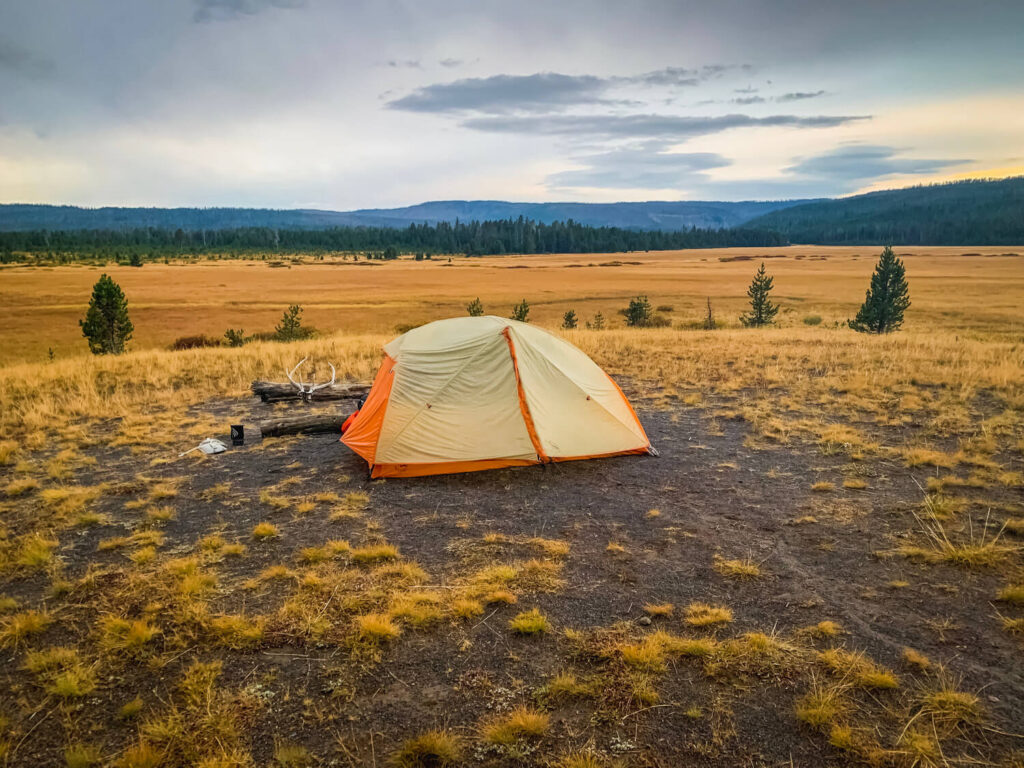
6. Lewis Lake Campground
Nestled against the shore of Lewis Lake, this 85-site campground is perfect for paddlers and boaters. Located in the park’s southern region, it’s one of the last campgrounds to fill up and offers a more peaceful experience.
The campground has vault toilets, seasonal potable water, and can accommodate RVs under 25 feet. Its location makes it an excellent choice for visitors also planning to explore Grand Teton National Park.
7. Tower Fall Campground
This intimate 31-site campground sits near the Tower-Roosevelt area and offers easy access to Tower Fall. The campground features vault toilets and can accommodate RVs up to 30 feet, though there’s a challenging hairpin curve to navigate. Its proximity to Roosevelt Lodge provides convenient access to dining and horseback riding opportunities.
Xanterra-Managed Campgrounds
Xanterra, as the park’s primary concessioner, operates five of Yellowstone’s largest and most developed campgrounds. These facilities typically offer more amenities than NPS campgrounds, including flush toilets, shower facilities at some locations, and better accommodation for larger RVs.
If you’re looking for a camping experience with more modern conveniences or traveling with a larger RV, these campgrounds are likely your best option.
1. Bridge Bay Campground
As one of the park’s largest facilities with 432 sites, Bridge Bay offers remarkable views of Yellowstone Lake and the Absaroka mountain range. The campground features flush toilets and a seasonal dump station.
Its location next to Bridge Bay Marina makes it perfect for boaters, and the campground can accommodate RVs up to 40 feet. The popular Natural Bridge Trail starts nearby, and scenic lake cruises are available from the marina during peak season.
2. Canyon Campground
Located in a lodgepole pine forest within Canyon Village, this 273-site campground provides excellent access to the Grand Canyon of the Yellowstone River. The facility offers flush toilets, hot showers, and laundry facilities.
RVs up to 40 feet can be accommodated, and a seasonal dump station is available. The campground’s location near Canyon Village means easy access to stores, restaurants, and other amenities.
3. Fishing Bridge RV Park
This is Yellowstone’s only campground with full hookups, featuring 310 sites exclusively for hard-sided RVs (no tents allowed due to heavy bear activity). The park offers full hookups, a dump station, showers, and laundry facilities.
Sites can fit RVs up to 40 feet in most spots and up to 95 feet in select sites. Located near Yellowstone Lake, it provides easy access to fishing and lake activities.
4. Grant Village Campground
With 430 sites, Grant Village Campground sits on Yellowstone Lake’s southwest shore among a lodgepole pine forest. The facility offers flush toilets, pay showers, laundry facilities, and a seasonal dump station. RVs up to 40 feet can be accommodated.
Its location near Grant Village means easy access to a visitor center, restaurants, and stores, plus it’s conveniently situated for exploring both Yellowstone and Grand Teton National Parks.
5. Madison Campground
Located near the Madison River, this 276-site campground is perfectly positioned for accessing Old Faithful and the park’s western geyser basins. The facility offers flush toilets and a seasonal dump station, and can accommodate RVs up to 40 feet.
Generator use is permitted during daytime hours. The campground’s location makes it excellent for wildlife viewing, particularly elk during the fall bugling season.
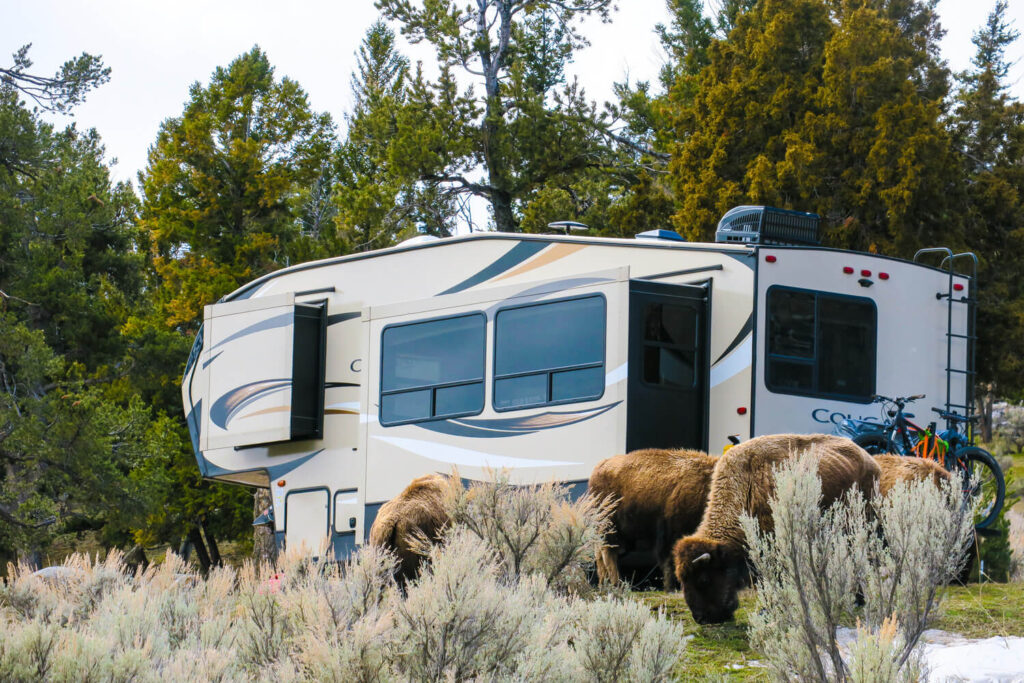
Amenities You’ll Have Access To
When it comes to amenities, Yellowstone’s campgrounds vary significantly. Here’s what you need to know:
Showers and Laundry
Only three campgrounds in the park offer shower facilities:
- Grant Village Campground
- Fishing Bridge RV Park
- Canyon Village Campground
If you’re staying at these locations, you get two free showers per day. Additional showers are available for a fee. Even if you’re not staying at these campgrounds, you can pay to use their shower facilities. You can also find public showers at several hotels in the park, including Old Faithful Inn, Old Faithful Lodge, Mammoth Hotel, and Roosevelt Lodge and Cabins.
Hookups and Generator Use
Fishing Bridge RV Park is the only campground offering full hookups (electricity, water, and sewer). However, several campgrounds allow generator use between 8 AM and 8 PM, including Bridge Bay, Canyon, Grant Village, Madison, Mammoth, and Norris.
Bear Safety and Food Storage
All campgrounds in Yellowstone provide bear-proof storage boxes, and using them is mandatory. Bears have excellent noses and can be attracted to food, so proper food storage is essential for both your safety and the bears’ well-being. You must store all food, garbage, coolers, dishes, and any items with fragrances in either the bear boxes or hard-sided vehicles when not in use.
Important Rules To Remember
Camping in Yellowstone comes with specific rules designed to protect both visitors and the park:
- Quiet hours run from 8 PM to 8 AM
- Maximum stay limits are 14 days between July 1 and Labor Day, extending to 30 days during other times
- Each campsite is limited to six people
- Campfires are allowed in all campgrounds except Fishing Bridge RV Park (though fire restrictions may apply during dry periods)
- All food and scented items must be properly stored in bear boxes or vehicles
- You cannot camp or sleep in vehicles outside designated campgrounds
Camping Outside Yellowstone National Park
Sometimes staying outside the park can be a great alternative, especially if park campgrounds are full or you’re looking for different amenities. There are numerous options in the surrounding areas.
West Yellowstone/Hebgen Lake Area
The area around Hebgen Lake and neighboring Earthquake Lake offers beautiful camping opportunities. Rainbow Point Campground and Beaver Creek Campground are excellent choices in this region. Rainbow Point sits on the south side of Hebgen Lake, positioning you closer to the park’s West Entrance.
Gardiner Area
Located near the North Entrance, Gardiner provides convenient access to the park. The surrounding area offers both Forest Service campgrounds and private facilities. Eagle Creek Campground in the Custer Gallatin National Forest is a popular choice in this region.
Cooke City-Silver Gate Area
While this area is farther from most park attractions, it’s an excellent base for exploring the Lamar Valley. It’s particularly good for wildlife enthusiasts who want to get an early start for wolf watching. The Beartooth Highway is also accessible from here, offering a spectacular scenic drive.
What To Remember When Planning Your Trip
When camping in Yellowstone, there are few things you need to consider that you might not have thought about (especially if you haven’t camped in national parks before).
Weather & Seasonal Variations
Yellowstone’s high elevation means weather can be unpredictable. Summer days typically reach the 60s and 70s (sometimes 80s), but nighttime temperatures often drop into the 30s, even in summer. Pack accordingly and prepare for cold nights. Most campgrounds operate from late spring into mid-autumn, with only Mammoth Campground remaining open year-round.
RV And Trailer Limitations
When Yellowstone lists measurements for RVs and trailers, they specify the total vehicle plus trailer length. Most campgrounds only allow up to 30-foot combined length, though some have a few longer sites available. Remember that most sites have either pull-through or back-in spots, without room to park a truck alongside a trailer.
Wildlife
Wildlife regularly visits Yellowstone’s campgrounds. Elk are common visitors in certain areas, particularly around Mammoth. While bears occasionally pass through campgrounds, proper food storage makes encounters unlikely. Bison tend to stay in open areas rather than wooded campgrounds.
Misc. Tips
To make the most of your Yellowstone camping experience, consider these tips:
- Make reservations as early as possible, especially for summer visits
- Be prepared for cold nights regardless of season
- Arrive at your campground during daylight hours for easier setup
- Keep all food and scented items properly stored
- Take advantage of evening ranger programs at campground amphitheaters
- Consider splitting your stay between different campgrounds to explore different areas of this vast park
Closing Thoughts
Camping in Yellowstone offers an unforgettable way to experience America’s first national park. Whether you’re looking for a full-service RV site, a quiet tent spot in the woods, or something in between, Yellowstone’s varied campgrounds provide options for every type of camper. By planning ahead and following park guidelines, you can create the perfect base for exploring this remarkable landscape of geysers, wildlife, and natural wonders.
Remember that while camping requires more preparation than staying in a hotel, the reward of waking up in the heart of Yellowstone’s wilderness is well worth the effort. The sound of wolves howling in the distance, the sight of elk grazing near your campsite, or the experience of making s’mores around a campfire in one of America’s most iconic landscapes creates memories that will last a lifetime.



